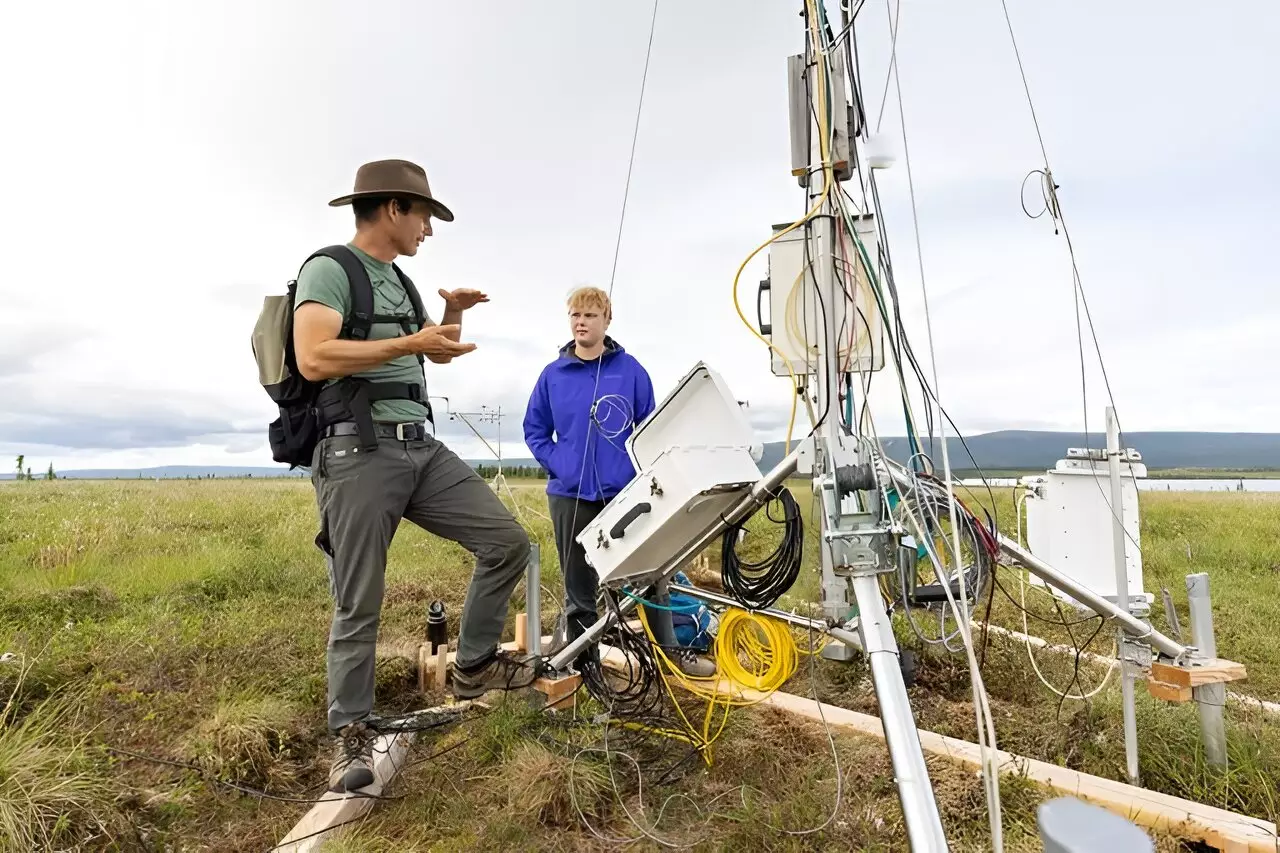The Arctic tundra, a unique biome that stretches across the northernmost regions of our planet, is increasingly taking center stage in discussions surrounding climate change. Three pivotal studies, spearheaded by Ted Schuur, a Regents’ professor of biological sciences at Northern Arizona University, and a consortium of researchers through the Permafrost Carbon Network, delve into the critical biological processes of this delicate ecosystem. This research is crucial not only for understanding the mechanisms of carbon cycling in the Arctic but also for predicting how these processes contribute to the overarching climate crisis as they evolve.
Permafrost regions serve as immense reservoirs of organic carbon, holding about a third of the world’s soil carbon despite constituting only 15% of Earth’s land area. This dichotomy underscores the urgency of comprehending how rising temperatures are altering carbon dynamics in the tundra. Essentially, as temperatures rise, carbon that has been historically locked away in permafrost begins to escape into the atmosphere through biological processes, resulting in what scientists classify as ecosystem respiration. It’s a cycle that, if unchecked, may amplify climate change significantly, predicting an extra 10% to 20% increase in greenhouse gas emissions by 2100.
Effects of Warming on Carbon Dynamics
One of the more profound findings revealed in Schuur’s studies highlights that permafrost ecosystems are not just passively responding to warming; they are becoming proactive contributors to atmospheric carbon levels. Warming in these areas is happening at a rate that is three to four times faster than global averages. The repercussions are severe: as permafrost thaws, it triggers a cascade of biological processes that release carbon dioxide and methane—potent greenhouse gases that exacerbate global warming.
In a comprehensive study published in *Nature Climate Change*, researchers scrutinized decades of carbon dioxide flux data gathered from 70 locations, both in permafrost and non-permafrost regions. They discovered that, unlike their non-permafrost counterparts—in which seasonal plant growth significantly bolstered carbon storage in summer—permafrost ecosystems show substantial carbon losses during the fall and winter months, an alarming trend attributed to rising temperatures and increased thaw depth. This nuanced understanding of seasonal carbon cycling underscores the complex interplay between rising temperatures and biological responses, which often yield unintended consequences for the climate.
The Global Implications of Local Research
These Arctic studies are not purely academic. The findings carry dire implications for international climate policy, particularly concerning agreements like the Paris Accord. An unsettling reality is that the emissions projected from thawing permafrost are largely absent from the global greenhouse gas emissions targets outlined in this landmark climate treaty. This oversight holds enormous significance: it implies that nations worldwide may need to adopt even more aggressive emissions reduction strategies to counteract the unforeseen contributions from these thawed permafrost regions.
Moreover, local environmental factors—such as nutrient availability and water conditions—further complicate carbon dynamics, varying the rates of carbon uptake and release across different tundra sites. This variability serves as a critical reminder that the climate is not a monolithic entity; it is influenced by a myriad of localized conditions.
The Imperative for Ongoing Research
As Schuur and his team persist in gathering data, they are tackling one of the biggest challenges facing climate science: reconciling conflicting findings in the literature regarding carbon flux in the Arctic. Recent analyses suggest that, upon closer examination, carbon losses in non-growing seasons far exceed gains during the warmer months. This trend suggests that permafrost areas are transitioning from carbon sinks to sources, a worrying development that underscores the need for continuous monitoring and research.
As the global collaborative effort in this research unfolds, the data collected from the Arctic holds immense power. Insights from these studies are crucial to shaping effective climate policies aimed at diminishing human-driven greenhouse gas emissions. Schuur himself notes the significance of these experimental designs, particularly those using miniature greenhouses that simulate future warming conditions. The data derived from such experiments provide invaluable predictions about how permafrost ecosystems might respond under continued warming scenarios.
Geopolitical Challenges in Climate Research
However, geopolitical tensions present hurdles in this ongoing research. A notable example is the research challenges posed by the Russian invasion of Ukraine, which has hindered access to crucial permafrost sites and data. When faced with the loss of monitoring networks, which account for substantial variability in Arctic carbon flux, the scientific community must act swiftly and creatively to bridge these data gaps. Reestablishing research sites or finding alternative means to gather data is imperative if scientists are to draw informed conclusions about Arctic carbon dynamics.
This complexity necessitates not just scientific innovation but also political will. Global cooperation remains key to ensuring that the comprehensive understanding of the Arctic’s socio-ecological systems informs robust climate policies. Without this insight, the global community risks limited comprehension of one of the Earth’s major carbon reservoirs and its future implications for climate stability.


Leave a Reply